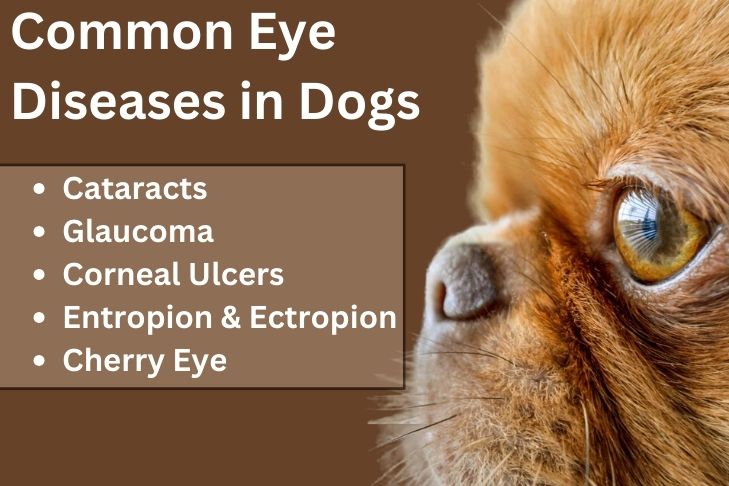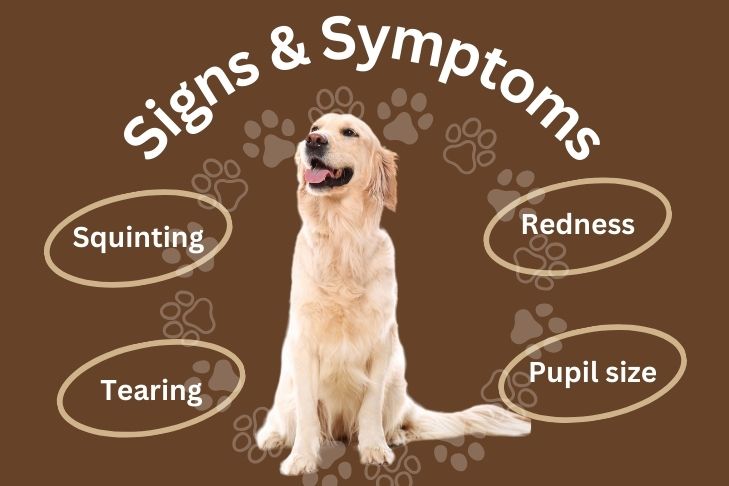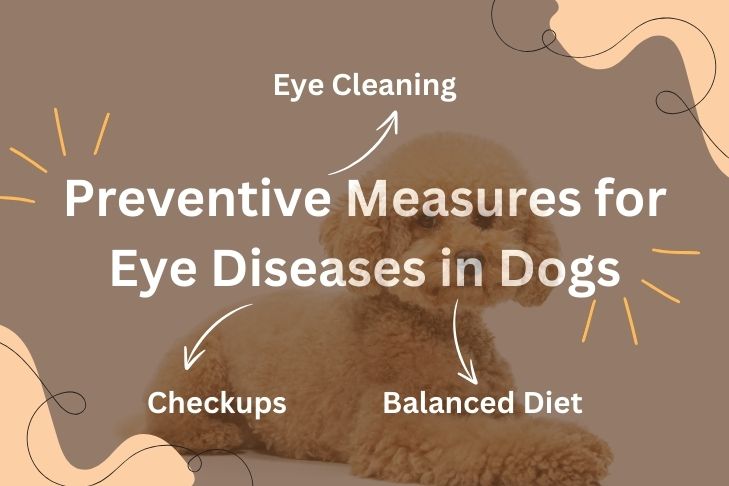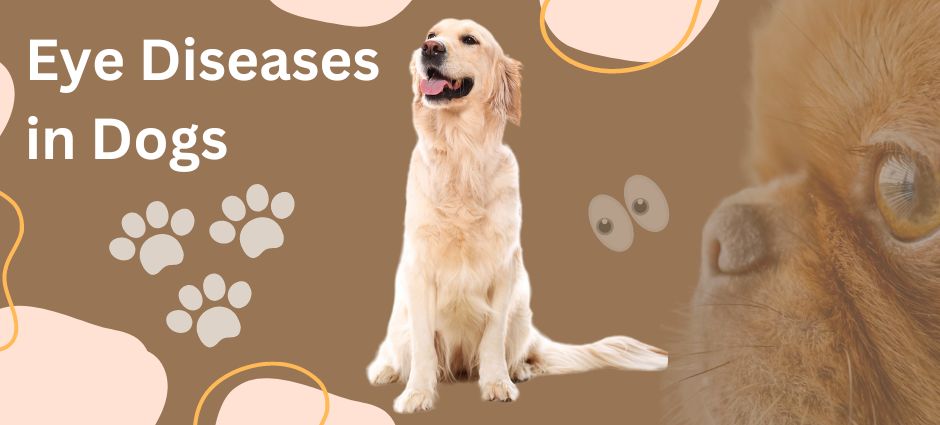Our furry friends rely heavily on their senses to navigate the world, and sight is no exception. Their expressive eyes can tell us a lot about their mood, health, and well-being. However, just like us humans, dogs can also get exposed to various eye diseases that may or may not impact their vision, which is equally scary.
This blog post by Claw Hive gives you insights into the world of eye diseases in dogs. We’ll explore the most common conditions, their symptoms, and what you can do to keep your curly haired big dog’s eyes healthy and bright.
Common Eye Diseases in Dogs

There are few diseases that affect dogs’ eyes:
1. Cataracts:
This age-related condition causes the lens of the eye to become cloudy, progressively obstructing vision. Early signs include a hazy appearance in the pupil, often starting in one eye and eventually affecting both. As cataracts mature, the cloudiness becomes more pronounced, leading to significant vision loss.
2. Glaucoma:
This painful condition occurs when pressure builds up inside the eye due to improper fluid drainage. The increased pressure damages the optic nerve, leading to vision loss if left untreated. Symptoms of glaucoma include squinting, redness, bulging eyes, and pawing at the affected eye.
3. Corneal Ulcers:
They consist of scratches on the cornea, the very clear top layer of the eye. Corneal ulcers can be caused by various factors, such as scratches from branches, foreign objects, or dry eyes. Signs of corneal ulcers include squinting, pawing at the eye, redness, and watery discharge.
Another read about dog ulcers’: Dog Mouth Ulcers.
4. Cherry Eye:
This condition, formally known as nictitating membrane prolapse, involves the protrusion of the third eyelid, a pink fleshy membrane located in the corner of the eye. While not always painful, cherry eyes can cause irritation and discomfort.
5. Entropion and Ectropion:
These conditions involve the inward or outward rolling of the eyelid. Entropion, where the eyelid folds inwards, can irritate the cornea. Ectropion, where the eyelid rolls outward, exposes the inner surface of the eyelid, making it susceptible to dryness and irritation.
6. Keratoconjunctivitis Sicca (KCS), or Dry Eye:
This condition occurs when the tear glands don’t produce enough tears to lubricate the eye. Symptoms include squinting, redness, thick discharge, and recurrent eye infections.
7. Progressive Retinal Atrophy (PRA):
This is a group of inherited diseases that cause degeneration of the retina, the light-sensitive layer at the back of the eye. PRA often causes slow vision loss that eventually leads to total blindness.
8. Sudden Acquired Retinal Degeneration Syndrome (SARDS):
This is a sudden and severe form of vision loss that can occur in dogs. Symptoms include night blindness, bumping into objects, and disorientation. The exact cause of SARDS is unknown, but it’s believed to be an autoimmune reaction.
Signs and Symptoms to Watch Out For

Early detection is key to managing eye diseases in dogs effectively and minimizing vision loss. Here are some general signs that might indicate your pup is experiencing eye problems:
- Squinting or pawing at the eye
- Redness, cloudiness, or discharge from the eye
- Bumping into objects or appearing disoriented
- Excessive tearing
- Changes in pupil size or shape
- No interest in playtime anymore
If you notice any of these signs, it’s crucial to schedule an appointment with your veterinarian for a comprehensive eye examination.
Learning about canine treatments? Find out our blog on glyphosate toxicity dogs treatment and keep your puppy safe.
Preventive Measures for Eye Diseases in Dogs

While some eye diseases are unavoidable due to genetics or age, there are steps all dog lovers can take to promote your dog’s overall eye health:
- Regular veterinary checkups: Schedule annual eye exams with your veterinarian, especially as your big furry dog ages.
- Balanced diet: Ensure your dog receives a balanced diet rich in essential nutrients that support eye health, including omega-3 fatty acids, vitamins A and E, and antioxidants.
- Environmental protection: Keep your dog away from potential hazards that could scratch or injure the eyes, such as thorny bushes or fireworks.
- Regular eye cleaning: Use a vet-approved eye wipe or solution to gently clean your dog’s eyes, especially if they tend to tear stains or discharge.
- Breed-specific considerations: Some breeds are more predisposed to certain eye diseases. Be aware of any potential risks associated with your dog’s breed and discuss preventive measures with your veterinarian.
Conclusion: Keeping Your Dog’s Eyes Bright
Just like a wagging tail and wet nose, healthy eyes are a sign of a happy and well-adjusted chunky dog. By being aware of common eye diseases in dogs, their symptoms, and preventive measures, you can ensure your furry friend enjoys clear vision throughout their lifetime and doesn’t miss out on anything.
Living with a dog with an eye disease requires love, patience, and some adjustments. But by providing them with proper care, you can ensure your huge white fluffy dog remains happy!




